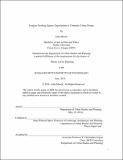| dc.contributor.advisor | Anne Whiston Spirn. | en_US |
| dc.contributor.author | Moody, John (John Stearns) | en_US |
| dc.contributor.other | Massachusetts Institute of Technology. Department of Urban Studies and Planning. | en_US |
| dc.coverage.spatial | n-us-ca | en_US |
| dc.date.accessioned | 2016-10-25T19:17:11Z | |
| dc.date.available | 2016-10-25T19:17:11Z | |
| dc.date.copyright | 2016 | en_US |
| dc.date.issued | 2016 | en_US |
| dc.identifier.uri | http://hdl.handle.net/1721.1/104985 | |
| dc.description | Thesis: M.C.P., Massachusetts Institute of Technology, Department of Urban Studies and Planning, 2016. | en_US |
| dc.description | This electronic version was submitted by the student author. The certified thesis is available in the Institute Archives and Special Collections. | en_US |
| dc.description | Cataloged from student-submitted PDF version of thesis. | en_US |
| dc.description | Includes bibliographical references (pages 89-121). | en_US |
| dc.description.abstract | Each person experiences urban space through the shifting narratives of his or her own cultural, economic and environmental perceptions. Yet within dominant urban design paradigms, many of these perceptions never make it into the public meeting, nor onto the abstract maps and renderings that planners and designers frequently employ. This thesis seeks to show that cinematic practice, or the production of subjective, immersive film narratives, can incorporate highly differentiated perceptions into the design process. By investigating a single public space, Pershing Square in downtown Los Angeles, California, with three cinematic "acts," this project puts three different methodological approaches to the test. Act One, "Pershing Square: Of Time and Place," employs critical theories to investigate the park through cultural conflicts that have propelled design interventions throughout its history. Act Two, "Pershing Square: Sense of Place," employs an ethnographic approach to investigate the park through the diverse perceptions of its users. Finally, Act Three, "Pershing Square: Visions of Place," takes a constructivist approach to re-imagine the park through its users' aspirations. This project runs concurrent with an international competition to redesign the park, which provides a benchmark for comparing the project's findings with conventional use of film in design practice. Although the project will expand beyond the scope of this thesis, initial findings strongly support the value of cinematic methods in communicating broader narratives about urban space and in stimulating design thinking that incorporates a dynamic pluralism of user perceptions. | en_US |
| dc.description.statementofresponsibility | by John Moody. | en_US |
| dc.format.extent | 121 pages | en_US |
| dc.language.iso | eng | en_US |
| dc.publisher | Massachusetts Institute of Technology | en_US |
| dc.rights | M.I.T. theses are protected by copyright. They may be viewed from this source for any purpose, but reproduction or distribution in any format is prohibited without written permission. See provided URL for inquiries about permission. | en_US |
| dc.rights.uri | http://dspace.mit.edu/handle/1721.1/7582 | en_US |
| dc.subject | Urban Studies and Planning. | en_US |
| dc.title | Imagine Pershing Square : experiments in cinematic urban design | en_US |
| dc.title.alternative | Experiments in cinematic urban design | en_US |
| dc.type | Thesis | en_US |
| dc.description.degree | M.C.P. | en_US |
| dc.contributor.department | Massachusetts Institute of Technology. Department of Urban Studies and Planning | |
| dc.identifier.oclc | 959972389 | en_US |
